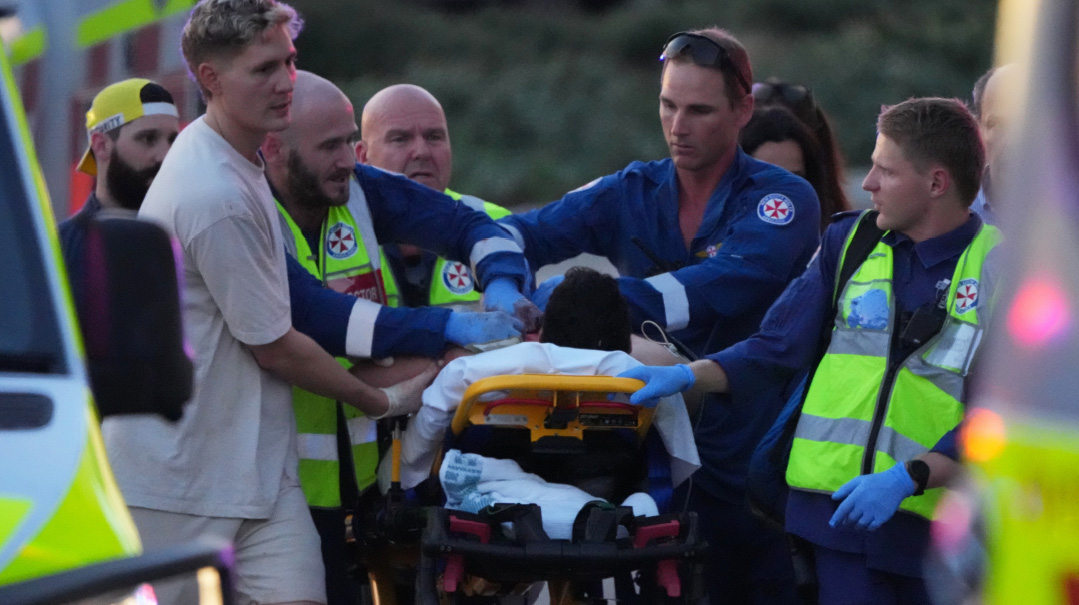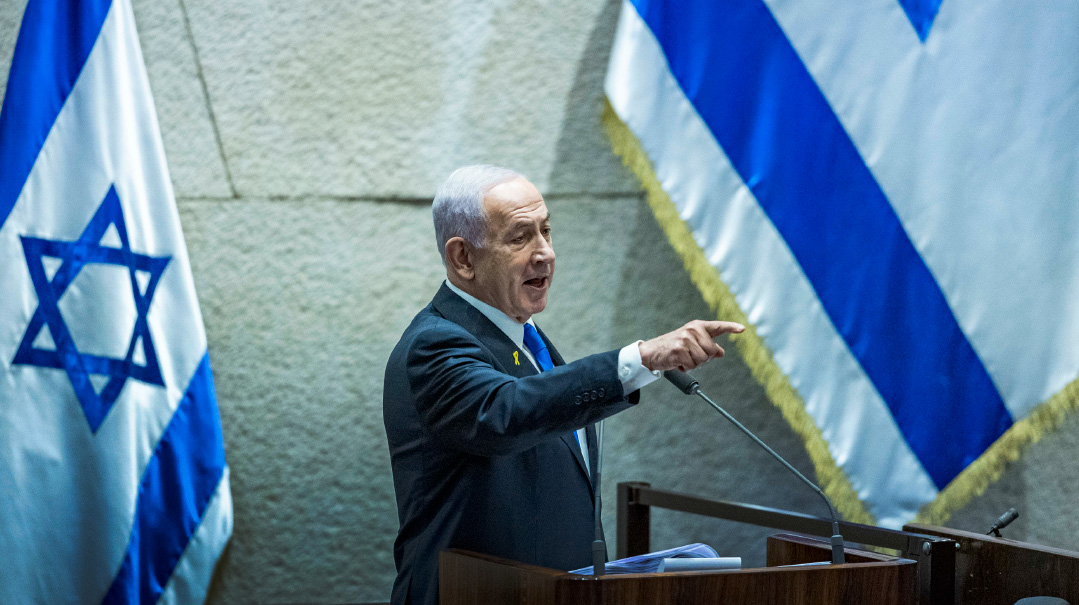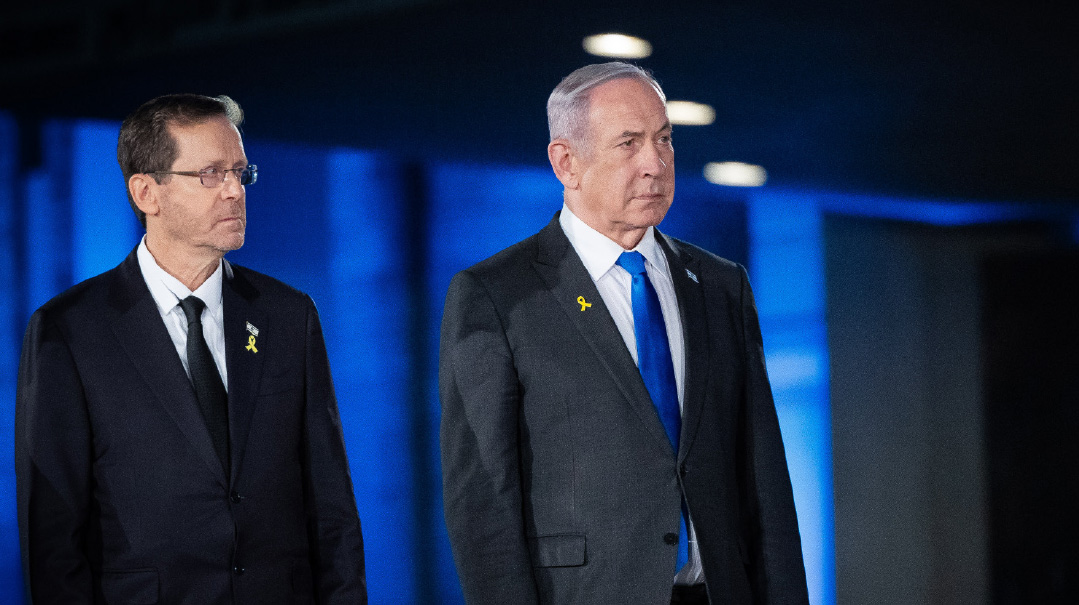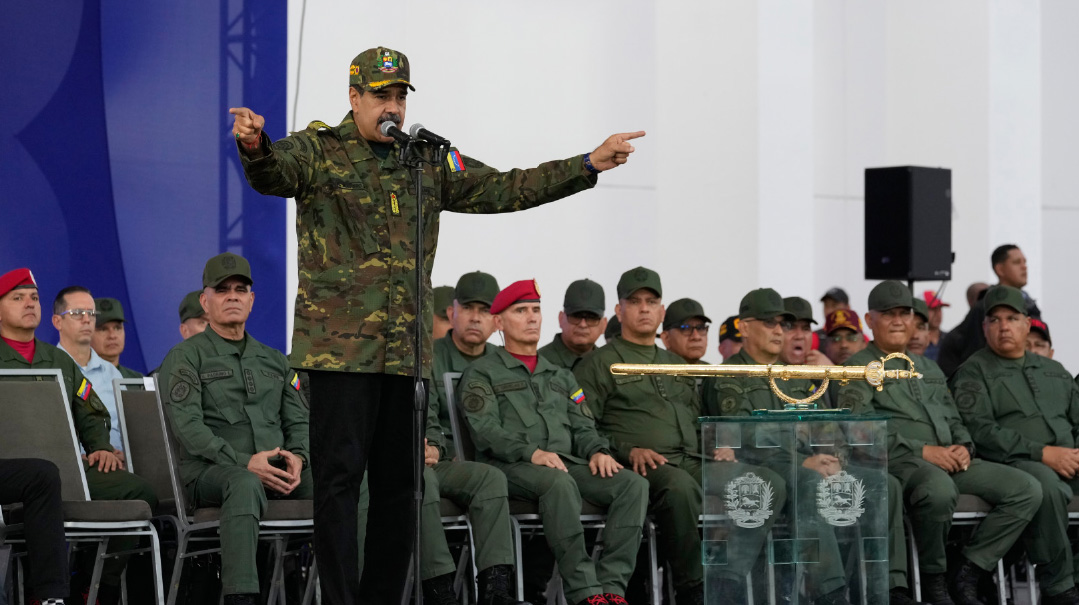In for the Long Haul

A Conversation with Dr. Irving Lebovics of Am Echad United
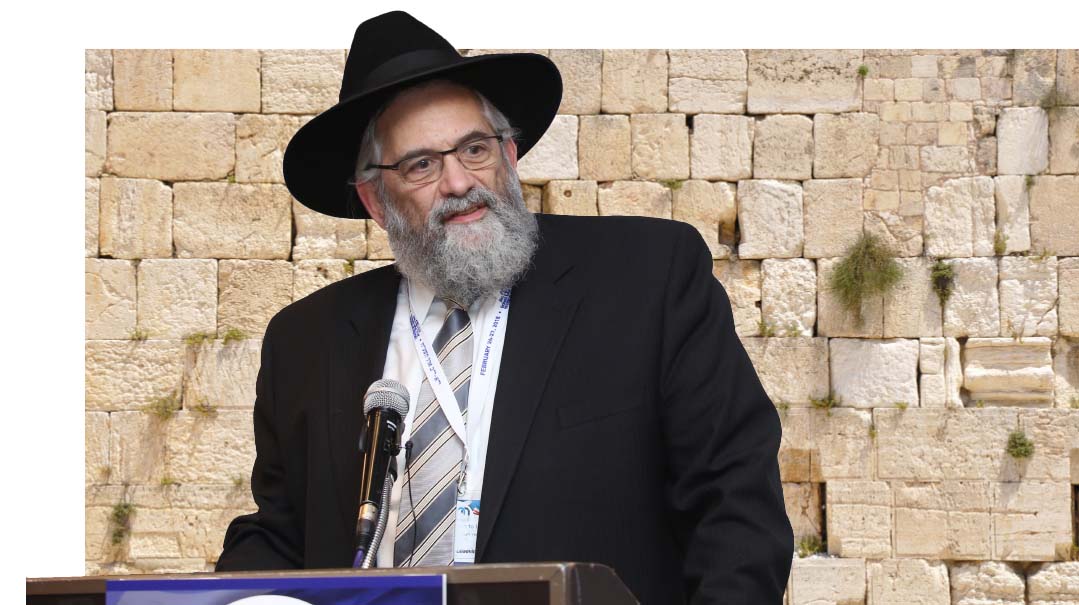
Am Echad, an initiative first launched by Rabbi Moshe Sherer ztz”l of Agudath Israel 24 years ago, has been given a new lease on life by the recent Kotel Compromise, which would designate a large new area at the Kosel for “egalitarian prayer.” That deal was essentially negotiated directly between the Israeli government and the American heterodox movements.
Am Echad, then as now, is intended to present to Israeli leaders the unified voice of the American Orthodox community, as well as to provide them with a broader context of American Jewish life than is being supplied by Reform and Conservative activists.
Dr. Irving Lebovics, together with Mr. Shlomo Werdiger, chairman of the board of Agudath Israel of America, is the principal initiator of the revived Am Echad, which includes activists from a wide array of Orthodox organizations: Agudath Israel; Orthodox Union, Young Israel; Chabad; and the Coalition for Jewish Values. Dr. Lebovics was one of the founders of the California branch of Agudath Israel, and has been its driving force for years. He is a dental surgeon affiliated with Cedars-Sinai Medical Center, and a longtime member of the hospital’s ethics committee. He has testified frequently in Sacramento and Washington, D.C., on a large array of issues connected to medical ethics and resources for special needs children, among others.
The original Am Echad office in Israel came into existence in 1999, following a presentation I gave at the 1998 convention of Agudath Israel of America. There I pointed out that most of the negative stories about Torah Jews in the world were being generated from Israel, and argued that with a relatively small investment of resources, it would be possible to change the tenor of press coverage of Torah Jewry. In a private meeting with the Novominsker Rebbe ztz”l, who was then Rosh Agudath Israel, he gave his strong blessing to the initiative. The media focus of the original Am Echad office was reflected in the name of its website: Jewish Media Resources. That office ceased operations in 2007.
Dr. Lebovics and I have been friends for nearly 30 years, and I have stayed in his home in Los Angeles several times. We spoke at length about the new iteration of Am Echad.
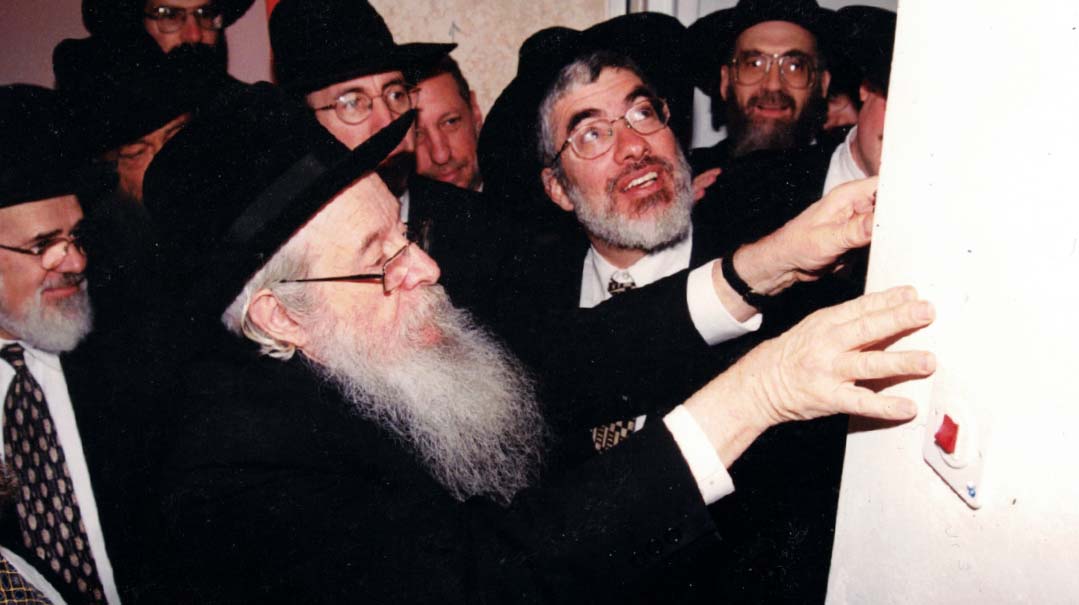
Am Echad was the name of the campaign that Rabbi Moshe Sherer announced at the 1997 convention of Agudath Israel, which led to a large mission to Israel a few months later. I’m guessing the choice of Am Echad United for your project was not coincidental.
You are right about that. Our intention with this new project is to reinvigorate the one that Rabbi Sherer began. I was on the early 1998 mission, which was largely in response to a yearlong campaign by the American Reform and Conservative movements against the passage of a bill specifying that geirus in Israel would only be according to halachah. The 1996 coalition agreement of Prime Minister Netanyahu’s first government included provision for the enactment of such a law.
And I was on the subsequent mission, following Rabbi Sherer’s passing, when we officially opened the Jerusalem office. That mission also included meetings with Knesset members and ministers.
What were your main takeaways from those missions?
The common stereotype prior to the missions was that nonreligious Knesset members and cabinet ministers were not interested in meeting with Orthodox delegations from America. We discovered that was absolutely not true.
On the 1998 mission, I remember Prime Minister Netanyahu standing transfixed, as Richard Horowitz made a presentation of his famous graph of what would be left after three generations of 100 unaffiliated Jews, 100 Reform Jews, 100 Conservative, 100 Centrist Orthodox, and 100 chareidi Jews. The prime minister spoke afterwards of the “decimation” of the Jewish People taking place in America.
We also met with opposition leader Ehud Barak and some of his top aides. Barak made a point of mentioning that his grandfather had been a talmid of Rav Itzele Ponevezher, and that his American cousins are prominent members of the Telshe Yeshivah community.
One of the highlights of the subsequent mission was an impassioned plea in the Knesset that we should do everything in our power to stop the efforts by the Waqf controlling the Temple Mount to destroy all evidence of the Beis Hamikdash that stood there. That plea came from a pony-tailed, ostensibly secular MK, Eliezer “Cheetah” Cohen. Cheetah was a legendary IAF helicopter pilot. Many of the delegates left that room embarrassed that he was so much more passionate about the issue than we had been until that moment.

Since the closing of the American Am Echad office in 2007, you and I have spoken many times about trying to revive the effort. What has happened now that made the time ripe for finally doing so?
The immediate trigger for the revival of Am Echad was the so-called Kotel Agreement for the creation, at the cost of tens of millions of shekels, of an egalitarian prayer area at Robinson’s Arch, adjacent to the Kosel. Those negotiations were conducted almost entirely with the leadership of the American Reform and Conservative movements, without any involvement of American Orthodox Jewry.
The overarching message of our first mission of approximately 40 activists in the summer of 2018 was that the heterodox movements do not represent or speak for American Jewry. And that is even more true with respect to the future. Already the majority of children of synagogue-affiliated families are being raised in Orthodox families. The 2013 Pew Survey concluded that by 2030, the majority of Jewish children under nine will be Orthodox.
And that is the present situation. But a projection by a Yale professor, in a peer-reviewed journal, concluded that 50 years from the 2013 Pew Survey, American Orthodox Jewry would be equal to the Reform and Conservative movements combined, and that a full one-third of American Jews would be “partly Jewish or Jews of no religion.” Over that period, American Jewry will decline in numbers due to intermarriage and the weakening of the Reform and Conservative movements, only to experience a resurgence in numbers towards the end of the 50 years, as a consequence of rapid Orthodox growth.
Were there other outcomes from that mission?
Our delegation arrived approximately two months before the General Assembly of Jewish Federations [GA] gathering held in Tel Aviv in late October 2018. The theme of the GA was “We need to talk.”
Following up on our recently concluded visit, which generated a good deal of coverage, including a presentation in the Knesset of the economic contribution to Israel of overseas chareidim, we were well-positioned to attack the premise of the GA. We plastered the media with ads challenging the claim of the GA delegates, mostly representing the heterodox movements and advocating for more “religious pluralism” in Israel, to speak for American Jewry. One of our themes was “A Monologue, Not a Dialogue.”
Many of us published op-ed pieces in the Israeli press, both Hebrew and English: writers included Leah Aharoni, who was subsequently appointed director of our Israel office; Rabbi Dovid Eliezrie, a Chabad shaliach in southern California who has been actively involved in Diaspora-Israel relations since the first Am Echad campaign; and myself.
And our message came across. Belatedly, the GA added a couple of Orthodox speakers. The Jerusalem Post, while reiterating its support for religious pluralism in Israel, strongly criticized the organizers of the GA. The paper’s editorial, entitled “Real Talk,” concluded, “But while the JFNA may say, ‘We need to talk,’ true dialogue requires listening and recognizing differences of opinion. Cutting out parts of the discourse is not the way to bridge the current divide. We need to recognize our differences and the reasons behind them. That is the true way to advance our people.”
The Jerusalem Post editorial noted that the speakers on the pluralism panel included only supporters, not “the other half of the population that is opposed.” Though most Israelis support the nation-state law, it pointed out, the Reform movement purchased a large billboard, with then prime minister Netanyahu’s face highlighted in red, demanding the law be revoked. And left-wing American groups — the New Israel Fund, J Street, and Truah — all maintained booths calling for American Jews to hold Knesset members “accountable.” Similarly, panels on Israeli security has excluded all opponents of a “two-state solution.”
No wonder that Prime Minister Netanyahu concluded his question-and-answer session at the GA convention by speaking about Jewish continuity. He described two batei knesset that he had recently visited: the Choral Synagogue in Vilna, and an eight-century synagogue in the Golan Heights, rebuilt using artificial intelligence precisely according to the original plan.
We were told that at a private meeting with Reform and Conservative leaders, Netanyahu told them that they should focus more on fighting assimilation in North America.
On that trip, we also made key contacts with many crucial figures. For instance, Yaakov Hagoel, who is today chairman of the World Zionist Organization, reached out to us. In large part, due to relationships established at that time, all the land in Israel under the aegis of Keren Kayemet L’Yisrael is observing shemittah this year, under the hashgachah of Rav Yosef Efrati’s beis din.
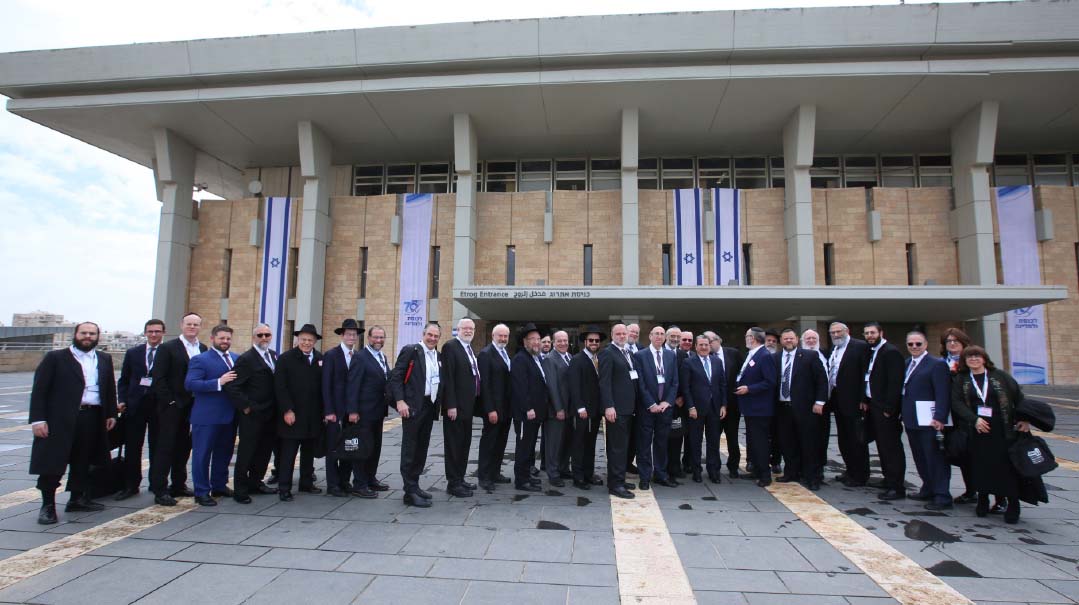
Do Israeli leaders really not know that the Reform and Conservative movements are in rapid decline? Have they bought the Kool-Aid that American Jewry is primarily Reform and Conservative, as opposed to Orthodox and unaffiliated, with the latter two groups by far the fastest growing?
In a word, yes. Israelis have been told for a decade now that American Jewry is all Reform. Last year, Israel’s public TV aired a four-part series on American Jewry. The centerpiece was a long interview with Reform rabbi Angela Buchdahl, whose father is Jewish and mother is Korean. She was held up as the face of progressive, modern, vibrant American Judaism.
Another case in point: During the recent government coalition negotiations, Rick Jacobs, the leader of the American Reform movement, went to the Knesset and told Prime Minister Naftali Bennett that if Gilad Kariv, former head of the Israeli Reform movement and a freshly elected Labor MK, was not appointed as the minister of Diaspora Affairs, “Diaspora Jews would be very upset.”
The fact that 99 percent of diaspora Jews have never heard of either Rick Jacobs or Gilad Kariv was completely lost on the Israelis. In the end, the Ministry of Diaspora Affairs went to Kariv’s Labor Party colleague Nachman Shai, and Kariv himself received the chair of the Legislation Committee.
I was in Israel last July. Leah Aharoni and I had a meeting with Diaspora Affairs Minister Nachman Shai. Originally that meeting was scheduled for 15 minutes, but we ended up speaking for two hours.
Shai is an intelligent man, who speaks a fluent English. But when I mentioned the 2013 Pew Survey, and the more recent 2020 Survey, it quickly became clear that he had never heard of Pew.
What other things would you like convey to Israeli leaders?
I’ll answer that question with a story. During the 11 days of fighting with Hamas in May, nearly 100 students at non-Orthodox rabbinical seminaries in North America signed an open letter accusing Israel of ethnic cleansing, the “violent suppression of human rights, and enabling apartheid in the Palestinian territories.” And they called upon American Jewish institutions to break their silence and hold Israel accountable for its “abuse of power and racist violence.”
We wrote a sharp letter condemning their petition, and its total lack of identification with the Jews of Israel, who were at that time under a missile and rocket barrage from Hamas in the Gaza Strip. That letter was read in the Knesset by Shas MK Rabbi Moshe Abutbul.
A few weeks ago, I had a meeting with Benny Kasriel, the mayor of Maalei Adumim, in Los Angeles. I played a tape for him of Rabbi Abutbul reading our letter in Knesset. He responded with tears in his eyes, saying how much the letter meant to him.
“I thought all American Jews hated us,” he said. “Why don’t we all know this?!”
After the Arab rioting in Lod last May, Am Echad sent money to a local Talmud Torah for helping talmidim with emotional resilience after the trauma.
But we are not just making the point that we offer emotional support and concern from afar. Rather, we are deeply connected to Israel and everything that happens there. American Orthodox Jews, as a whole, send their children to Israel for minimally one or two years after high school to learn in Israel. Many of those students end up living in Israel. Orthodox Jews are the most likely to make aliyah, and to buy apartments in Israel, even if they do not live there full-time. In short, we make a major contribution to the Israeli economy — to El Al, to the hotel industry, and to construction. And many Orthodox Jews have shifted a sizable portion of their businesses to Israel.
Our next mission, which will take place in the next couple of months, will be specifically designed to reinforce that point. The group will include many relatively young businessmen with companies and investments in Israel. Many lived in Israel for years and speak Hebrew well.
What is the value added of a group of American balebatim and communal leaders lobbying on such issues as kashrus, geirus, and the Kosel? What can you do that the religious and chareidi MKs cannot?
The conversation is a different conversation. In the Knesset, much of the discussion tends to take the form of horse trading, power politics. The language used in the Knesset plenum can be pretty rough on all sides.
That’s not where we're coming from. Almost all those involved in Am Echad are first or second-generation talmidim of Rabbi Sherer. He was, on the one hand, the fiercest opponent of the idea that Judaism consists of a multiplicity of “streams,” each of equal validity, according to one’s personal preference. And yet when he passed away, Reform leader Alexander Schindler wrote a eulogy of him in the New York Times.
Further, Rabbi Sherer never lost sight of the fact that our every word and action can end up being broadcast around the world, and that our audience is not confined to the “mikveh talk” in Bnei Brak. The original Am Echad office in Jerusalem only came about because so many negative stories about Torah Jews were being generated there, and there was a desire to change the whole tenor of the way the Torah world is portrayed.
One of Mrs. Aharoni’s dreams is to create a course for chareidi Knesset aides on how one speaks to the world outside our daled amos. One of the centerpieces of that course will be an exchange between the Chazon Ish and Rabbi Shlomo Lorincz, who represented Agudah in the Knesset for over three decades. Once, the Chazon Ish vetoed, at the last moment, a fiery speech that Rabbi Lorincz intended to deliver against a second presidential term for Chaim Weizmann, who was consistently hostile to the Torah community. Later, the Chazon Ish explained that one must always ask what will be gained and what will be lost by speaking. In that case, there was nothing to be gained. Weizmann would surely have been reelected, and a harsh speech against him would only have increased his antagonism to the Torah community.
Do the Israeli politicians and policymakers you meet ever look askance at your offering your advice and opinions about what is taking place in Israel?
I always explain that I’m a Torah Jew and, as such, Eretz Yisrael is never far from my consciousness. And the state of Torah in Eretz Yisrael is preeminent in my mind.
What we are doing has no connection, for instance, to what the heterodox leadership is pushing at the Kosel. Those movements do not pray for a Third Temple. And they call the sacrifices in the Temple the “sacrificial cult.” So if the Temple and the plaza below have no special meaning for them, why do they insist on turning it into a place of confrontation?
Do you see Am Echad doing more than running occasional missions to Israel?
Your question makes me laugh a bit. Because it is the same question that Eli Paley, the founder of the Machon Haredi (as well as publisher of Mishpacha) has asked me both times we’ve met to discuss possible joint research projects. He is a visionary. And I always have to explain to him that Am Echad must walk — establish contacts, build up a base of support, gain name recognition — before it can run.
But we are already doing much more than that. As I mentioned, we have a Jerusalem office, and plan to expand the staff. Finding our director, Mrs. Leah Aharoni, has been one of the keys to our success so far and to our plans for the future. After immigrating to the United States from her native Russia at 12, she subsequently made aliyah at 17. She is a highly effective speaker and writer in both Hebrew and English (and Russian), who has published widely.
Her introduction to public advocacy was as the co-founder in 2013 of Women for the Wall, which has brought hundreds of religious women to the Kosel every Rosh Chodesh, to express through their tefillos their commitment to the millennial traditions of the place. Besides teaching Torah, she is also a business advisor, with an MA in organizational psychology, who helped establish the first business hub for chareidi women through Temech.
When a high-ranking Israeli government minister wanted to hear from Orthodox Jewish leaders about their feelings on the Kotel compromise, his office contacted Am Echad to facilitate a Zoom meeting. The minister anticipated five or six people. Instead, we brought together over 25 leaders from as many different countries. They conveyed in no uncertain terms that the Diaspora Jewish community will not be silent if the Kosel is partitioned.
There is much more in the works, with plans to bring key Israeli groups to the US to educate them about American Orthodox community, just like when you brought MK Yuval Steinitz to visit America in 2000. We are in for the long haul.
Is Am Echad in fact a subsidiary of Agudath Israel of America?
Most definitely not. Perhaps our proudest achievement so far has been the creation of a think tank of leaders from various Jewish organizations, who come together on a Zoom call every two weeks to discuss major issues on the Israeli and Jewish policy scene. It is a strategic partnership of people completely dedicated to the klal. No politics, no ego — just a group of people all sharing their best information and brightest ideas.
Gathering talent from across the Orthodox spectrum was part of Rabbi Sherer’s vision for Am Echad from the beginning. The very question you just asked was put to him by Haim Shapiro of the Jerusalem Post at the outset of the 1998 mission, and he quickly pointed to the presence in the room of Rabbi Pesach Lerner, then executive director of Young Israel, and the late Rabbi Ronnie Greenwald, who was affiliated with the OU.
I’m confident that this joining together of many creative Jewish leaders from different organizations will bear fruit for years to come.
(Originally featured in Mishpacha, Issue 891)
Oops! We could not locate your form.
